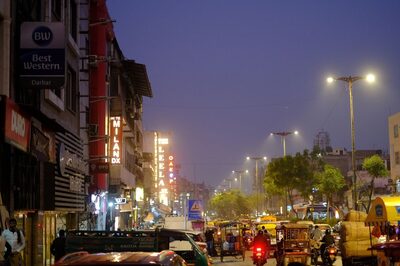
views
How to Make a Blessing Bag
Gather a few small and large resealable plastic bags. Blessing bags are typically packed in clear plastic zippered baggies because they’re resealable and the recipient can see what’s inside. These bags are also compact and waterproof, making them easily portable. Using plastic bags is cheaper than buying cloth bags that may stain, leak, or not be able to be sealed. For one basic blessing bag, a one-gallon Ziploc bag should work. Use smaller Ziploc bags inside the big one to separate items like food and toiletries. If you’re making blessing bags to donate to a shelter instead of an individual, call the shelter before assembling it. Ask what they need and bring it in a regular tote or reusable grocery bag.
Include individually packaged, non-perishable food. Make sure the food is non-perishable—meaning it doesn’t spoil easily and can be kept at room temperature—and sealed. Look for food items that are individually packaged and easy to open. While sugary treats are fine to include, prioritize items that are nutritional and high in protein. Avoid cans and other heavy items that are hard to transport, open, or cook. Don’t include homemade goods or open food. These don’t have expiration dates or allergen warnings, and likely won’t last as long as packaged goods. Examples of food items to include in your blessing bag include granola bars, cheese or peanut-butter cracker packs, ready-to-eat tuna packets, trail mix, dried fruit, beef jerky, packages cookies, and pudding cups (with a plastic spoon).
Add one or two small, sealed beverages. Include small bottled water and/or sports drinks. Bottles are better than cans because they can be resealed after being opened. Look for single-serving beverages, as larger bottles could be heavy to carry around. If you’re worried about leaks, place beverages in their own sealed plastic bags inside the blessing bag.
Pack small, useful toiletries in their own plastic bags. Hygiene is important for everyone’s health and confidence, but living on the street makes it difficult to have access to showers and running water. Address this issue by packing toiletry items that are lightweight, portable, and don’t necessarily require a sink or shower to use. Example toiletries to include in your blessing bag: a nail clipper, chapstick, travel-sized sunscreen and deodorant, a package of tissues, facial or hand wipes, a small comb or brush, a small toothbrush and toothpaste, floss, hair ties, and feminine hygiene products. It’s important to place these items in their own plastic bags so their fragrance doesn’t affect the taste of food items. Another extra to include are mints, cough drops, or gum.
Include basic first-aid essentials. Purchase a small first-aid kit to include in the blessing bag. Or, add individual first-aid items like a small package of band aids, a tube of antibiotic ointment, gauze, antiseptic wipes, or a disposable instant cold pack.
Incorporate seasonally appropriate gear. In the summertime, people experiencing homelessness could use sunglasses or sunscreen. In the winter, items like beanies, wool socks, and mittens are useful to endure low temperatures. Add these items in the appropriate season. When including socks, it’s better to include larger sizes than small ones.
Pack a brochure or print-out with local resources. Homeless people in your community may not have access to the Internet or be aware of the resources available to them. Collect brochures for local shelters, soup kitchens, food pantries, and other charity organizations. Or, print out a document with the addresses and phone numbers of your local resource centers and who they serve—for example, some only assist survivors of domestic violence, veterans, or unhoused youth.
Add a personal note of encouragement. When people experience homelessness, they can feel dehumanized and unwelcomed. Include a small note with words of encouragement to make your blessing bag more personal and reduce this sense of stigma. Things to write on your note include, “Take care,” “You are loved,” “Stay warm,” and “I’m praying for you.”
Giving Away Blessing Bags
Keep blessing bags in your car or daily bag. This way, the bags will be in reach when you encounter a homeless person in your community, such as at an intersection or on the street. If you make many bags, you may organize with others to distribute them at known encampments or areas in your city with a large homeless population.
Use your judgment. Most homeless people aren’t dangerous, but you never know if someone is experiencing a crisis. If someone appears to be upset or agitated, don’t approach them. Don’t wake someone who’s sleeping—it could startle them. Consider going with a group to give out your bags, and distribute them in the daytime. If you encounter an emergency situation where you fear for yours or other’s safety, call 911 to request support.
Make eye contact and greet the person you’re giving your bag to. People experiencing homelessness are often ignored by passersby, which can feel dehumanizing. Take time to make eye contact and be open to conversation if they want to talk. A few moments of connection and encouragement can make as much of a difference as the contents of the blessing bag. If they don’t want to talk, don’t force it. Not everyone wants to engage, so try to be sensitive to that. Don’t be in a hurry. If you have time to slow down and make eye contact when distributing the blessing bags, it will be a more dignified interaction than simply handing them the bag and rushing away. You can ask if they’d like you to pray for them. If they say no, respect that.
Ask if the person wants the blessing bag. Don’t assume they could use the things you’re offering. They may welcome the gift, but they may not want it. That’s okay. If they ask for cash instead, most homeless outreach organizations and advocacy groups suggest not giving cash to homeless individuals. Be honest and explain that you’d rather purchase something for them that they can eat or use.
Don’t expect anything in return. When you’re experiencing homelessness, your life is much more difficult than a housed person’s. Common problems like illness, fatigue, or harassment are magnified. When you give someone a blessing bag, they may not thank you or may even lash out. Accept that generosity is its own reward.
Consider other ways to help. There are several ways to donate your time or resources to assist the homeless population in the short term, such as volunteering at a shelter or holding a drive to collect your local organizations’ most-needed items. Contacting your local and state politicians to advocate for long-term solutions to homelessness can make a difference, says transitional shelter & homelessness expert Dan Bodner.
What Not to Put In a Blessing Bag
Unpackaged toiletries or food Don’t put open or unpackaged items in a blessing bag for the homeless. They could leak and contaminate or ruin the other items you pack. Additionally, packaged items have important information like expiration dates and allergy warnings. This is especially true for toiletries which could damage food just by being in proximity of it. The same goes for perishable goods that need to be refrigerated or expire quickly. These could mold or rot, tainting the other items in the blessing bag.
Only sugary, sticky, or hard foods Many people experiencing homelessness have inconsistent or no access to dental care. Giving them sugary foods or things that are hard to chew might not be helpful. Consider packing mostly soft, low-sugar foods like crackers or cup noodles.
Sharp objects or matches While homeless individuals could use toiletries like disposable razors or utensils like forks and knives, these objects can pose a danger to the individual and others in the community. The same goes for matches, lighters, and other fire-starting objects.
Religious literature You won’t know if someone shares your faith unless you ask them. Instead of assuming their religion, stick to non-religious forms of encouragement like a kind note or motivational quote. Some people may be offended by the inclusion of religious literature in your blessing bag, regardless of your intentions.
Canned goods without pop-tops Not all homeless people have can openers. Donate canned goods to your local shelters or food pantries. Give individuals lighter food items or small cans with pop-top openers (where you use a tab to open the can). Don’t forget to supply a plastic spoon or fork.
Potential Problems with Blessing Bags
Some people believe blessing bags are patronizing. By giving a homeless individual a bag of items you chose for them, instead of cash, they may think you’re implying you don’t trust them with money. Also, depending on whether or not they want or need the items you packed, they may be offended at what you’re giving them. Because they’re frequently on the move, homeless individuals cannot usually carry more than the essentials. Another concern is that the blessing bag could go to waste if the recipient is not actually homeless but a scam artist panhandling for money.
The homeless community may already have access to food. While you have good intentions when giving food to people experiencing homelessness, they likely already have access to food, explains Bodner. “In my experience, food is not the limiting resource. Shelter and services are a limited resource,” he says. Other advocates express that absence to quality food is more of an issue than access to food.
Blessing bags don’t address root causes of homelessness. The items in your blessing bag could help its recipient for days or even weeks. However, their access to shelter, security, employment, and healthcare are still limited or non-existent. Get involved in advocacy efforts that support legislation for long-term solutions to homelessness to make a bigger impact. While blessing bags are a step in the right direction, there’s always more that could be done.




















Comments
0 comment